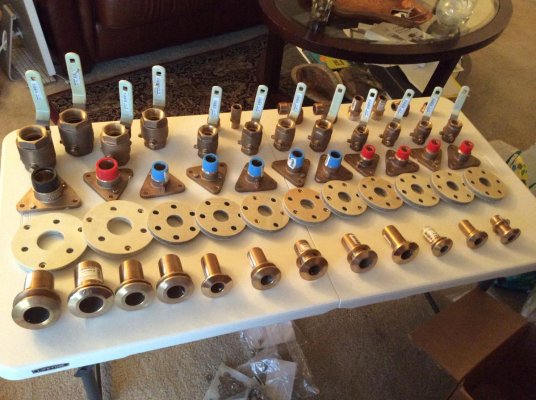I dont recall having gasket on the wing bolt cover on mine?
I dont think its needed.
When the wing bolt is tightened, it presses a plate which presses the rubber, the rubber expands against the inside housing and its sealed.
Its quite technically ingenious and simple at the same time.
You can take them apart if you have room with boat in water, stuff a rag into the hole to slow down the water coming in. They can be greased with silicone grease, something like that. Regular grease might swell the rubber.
You can probably even repair the rubber surface if needed wtih Loctite s30 black roof rubber polyurthane, its good stuff and soft like the original rubber, if your handy, holds up underwater. If really scored up badly, coat surface, then wrap with something to hold its shape, maybe paper. When cured soak it to dissolve away the paper.
The rubber surface on mine was pretty good condition.

 )
)



